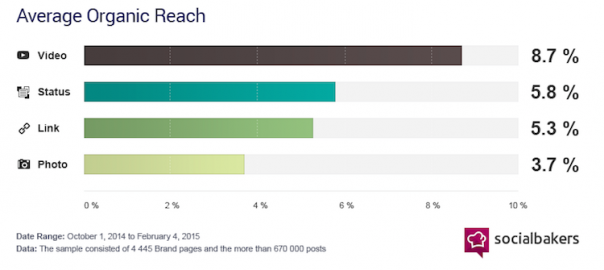
Video is an integral part of an effective ecommerce marketing strategy. Not only does it lead to higher average order value (AOV) and increased conversions, but a recent study conducted by Animoto revealed that 4x as many consumers would rather watch a video about a product than read about it. Additionally, 1 in 4 consumers actually lose interest in a company if it isn’t using video as part of its marketing strategy.
It’s clear that video is important, but where do you start when it comes to building a video strategy for your ecommerce site? Well, for starters, by understanding that an effective ecommerce video strategy has two objectives: to promote your product off-site in order to attract new customers, and to improve conversions and increase AOV on-site.
Below, we’ll walk you through how to build an ecommerce video strategy in a way that optimizes both of these objectives.
How to Build an On-site Video Strategy
As you build out an on-site video strategy, know that there are several types of videos to take into consideration before you choose just one format.
Product Videos
Product videos give potential buyers more insight into the products they are thinking about purchasing. They’re great because, unlike photos and text, videos allow you to bring your products and services to life by providing a fluid look at products in action, and from different angles. It’s as close as the customer can get to the item, without actually picking up the product and inspecting it in the store.
Product videos can be broken out into three types: general product videos, product demos and behind-the-scenes videos.
A general product video takes a look at the product from different angles, and reveals some of the primary features or benefits. This is great for clothing, jewelry or other products that are relatively stationary and visual. You can also use this format to promote upcoming lines and seasonal products to give customers an inside look at what’s to come. This is a great way to enhance customer loyalty, and provides a touchpoint during down times.
Take a look at how online store Kira Grace makes this work –– by utilizing video during their product photo shoots and uploading those videos to individual product pages. Here’s what one of the videos looks like –– and you can see how the video lives on the site here.
A product demo is a demonstration of how a product actually works. This is great for products that are more of an experience for the consumer. For instance, you could demonstrate how a cleaning product works and, through your demo, show off the impressive results. This will also help to alleviate any customer complaints that a product isn’t working as described –– given that a video can properly show how something works versus using text. Take a look at how online store Replacement Laptop Keys goes above and beyond with their product videos, demonstrating how to replace the key on the product page beyond just showcasing the product itself.

Finally, a behind-the-scenes video takes a look at where the product comes from and how it is made. Sharing the story behind your product can make customers feel more engaged with what you’re selling, and how a customer feels about your brand ultimately drives sales. Check out how online store Mason Jars uses video to both demonstrate how to use the product as well as explain why they invented the product to begin with:
Explainer or About Us Videos
An explainer or About Us video, rather than being about specific products, is about your business as a whole. Because a lot of trust is involved in the vendor-consumer relationship when it comes to ecommerce, a video talking about who you are, what you do, why you do it and why people should care is a great way to establish a sense of trust. It also humanizes an ecommerce brand, giving more of a boutique feel to the entire experience. Those people that connect and relate with you will become loyal customers, and the base for all of your targeted marketing.
See below how online store K-Bands Training uses video to explain their site, their product and how they are dedicated to helping you:
Customer Testimonials
Word-of-mouth is powerful. According to a survey by BrightLocal, 85% of consumers look for online reviews when deciding whether or not a business is reputable. By including video testimonials on your site, you can bring positive reviews directly to your customers, building a sense of trust and reputability.
When putting together a customer testimonial video, interview happy customers. If you don’t have the time or resources to shoot interviews, you can also use assets you already have to create a reel of customer reviews, as in this example from Vien Restaurant.
How to Build an Off-site Video Strategy
The videos on your site are designed to help move customers already interested in your product through the purchasing process. When it comes to off-site videos, however, these are designed to spark interest from new customers and entice old customers to come back for more. For this reason, when posting videos outside of your site – i.e. on sites like YouTube and Facebook – you’ll want to strategize a bit differently.
Here are a few best practices to think through.
Thought Leadership and Educational videos
What problem does your product solve? What expertise do you have as a result of creating and selling it? Creating educational video content around pain points and/or forward thinking is a great way to showcase your company’s expertise in an area. Keep in mind that these videos don’t need to be directly tied to the product you’re offering, but should be in the same general wheelhouse. Creating videos that would interest someone in your market is a good way to broaden your brand voice and influence. Once customers begin to notice your videos, and see that you are regularly providing accurate and informational content, they’ll be more inclined to do business with you.
Let’s say you’ve got a business selling home decor products online. By creating fun videos with tips on interior design, feng shui or other related topics you can attract people who are potentially in the market for your product, as well as begin to create brand awareness at large. Direct these users back to your site through YouTube Cards or links in the video description.
Promotions
For your followers on Facebook, Twitter, Pinterest and other social platforms, video can be a great way to promote upcoming sales, specials and deals. Why video over text or images? Because video stands out –– especially on Facebook, where videos auto-play in the Newsfeed and are, by nature, easily shareable. Animoto’s survey also found that nearly half of consumers have personally shared a company video on their profile and 84% have liked a company video in their Newsfeed.
A recent report from Social Bakers showed, additionally, that videos see a 135% increase in organic reach on Facebook when compared to photos.

In all, a video about a promotion puts a face behind a giveaway or sale –– allowing online customers to better relate to your brand story and your offering.
Explainer or About Us Videos
The explainer or About Us video you have on your website, as recommended above, is also good to have off-site, where it’s accessible to new potential customers that have discovered your content and are interested in learning more. You can use this as your featured video on YouTube, as well as your Facebook business page. Check out Bigcommerce’s explainer video, which always holds the first video slot on the company’s YouTube page.
Additionally, some of the other on-site content recommended earlier including customer testimonials, new product videos and behind-the-scenes looks into your company can be nice additions to platforms where current customers are following you.
Getting Started
It’s important to consider your bandwidth for creating videos before you start, including who can help and how much time you it will take to produce something high-quality.
If you only have time to create a few videos, focus on the products that are most popular and that earn you the most revenue. Four in five of the customers surveyed in Animoto’s report said a video showing how a product or service works is important, and they ranked the following types of videos in order of importance as follows:
- Videos showing how a product is made
- Testimonial videos
- Videos about the company
Armed with that knowledge, prioritize your time to produce the videos that will produce the highest ROI for your time spend. Still have questions? Drop them in the comment section below or stay tuned for our next post, which will take a look at how to actually create the videos themselves.
(238)
Report Post





